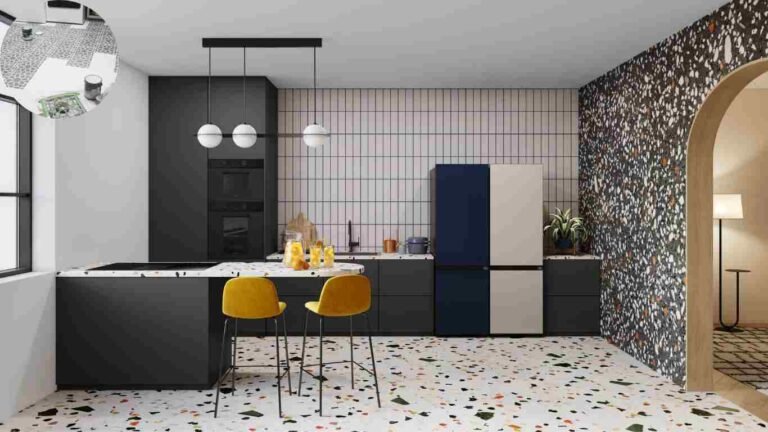Thinking about giving your kitchen a fresh, modern update without the hassle and expense of replacing your floor tiles? Painting your kitchen floor tiles white is a budget-friendly and creative way to completely transform the look of your space. With the right preparation and materials, you can achieve a clean, bright finish that makes your kitchen feel brand new. While painting floor tiles requires careful prep and the right products for durability, it’s a practical DIY project that can save you money and let you customize your floors to match your style. Whether you want a sleek white finish or a unique pattern, painting your kitchen floor tiles is a simple solution for a stunning makeover-no major renovation required.
The popularity of painted tile floors
Painted tile floors have surged in popularity as homeowners seek budget-friendly updates. They’re an ideal solution for those looking to refresh their spaces without the hassle of a complete remodel.
One reason for this trend is versatility. A splash of paint can easily transform dated tiles into stylish features that match contemporary aesthetics. This flexibility allows personal expression through color choices and patterns.
Social media platforms have also played a vital role in showcasing stunning before-and-after transformations, inspiring others to take on similar projects. The DIY movement continues to flourish, with painted tile floors becoming an accessible option for many eager renovators looking to elevate their interiors effortlessly.
Benefits of painting kitchen floor tiles white
Painting your kitchen floor tiles white offers a fresh and modern look. This bright color can make the space feel larger and airier, creating an inviting atmosphere.
You may also read (flooring for your home).
White tiles are also versatile. They complement various design styles, from minimalist to rustic. You can easily match them with different decor elements without clashing.
dirt or stains quickly. With proper cleaning, they can maintain their pristine appearance for years.
Tile floors in white never go out of style because their timeless appeal is unmatched. Whether you’re entertaining guests or enjoying family meals, this classic choice enhances any occasion in your home.
Things to consider before painting kitchen floor tiles
Before you grab that paintbrush, take a moment to assess your tiles. Are they in good condition? A crack or chip in the finish can compromise the finish and cause it to peel.
Consider the type of tile as well. Painting porcelain and ceramic is generally easier than painting natural stone. Each material reacts differently, so do some research specific to your tile type.
Think about foot traffic too. High-traffic areas may wear down painted surfaces quickly, leading to touch-ups sooner than you’d like.
Factor in your lifestyle. Do you have kids or pets? Spills and messes might require more frequent maintenance on a painted surface compared to traditional tiles. Make sure you’re ready for potential upkeep before committing!
Step-by-step guide for painting kitchen floor tiles
Start by gathering your materials. You’ll need tile paint, a high-quality primer, a brush, and a roller for even coverage. Don’t forget painter’s tape to protect edges.
Next, prepare the surface. Clean the tiles thoroughly with a mixture of soap and water to remove dirt and grease. Allow them to dry completely.
Once dry, apply the primer. It is crucial to take this step as it improves the adhesion of the paint After priming, let it cure for several hours before moving on.
Now it’s time for the first coat of paint. Use your roller for large areas and a brush for corners or detailed spots. Thin coats are best; thick coats can peel.
Allow each coat to dry fully before applying another layer—two or three coats are usually enough for an even finish.
Seal your work with a clear topcoat once everything has dried properly to ensure durability over time.
Alternatives to painting kitchen floor tiles white
If painting kitchen floor tiles white doesn’t resonate with you, there are several appealing alternatives to consider.
One option is tile stickers or decals. These come in various designs and can instantly refresh your space without the commitment of paint.
Changing the grout color can create a new look for your tiles, providing a fresh contrast that enhances their appearance.
For those seeking a more dramatic transformation, luxury vinyl tile (LVT) offers durability and style. It mimics the look of traditional tiles but adds warmth underfoot.
You might explore natural stone options like slate or marble for an upscale feel that remains timeless yet modern. Each alternative brings its own charm without the need for paint.
Maintenance and care tips for painted tile floors
Maintaining and caring for painted tile floors is essential to keep them looking fresh and vibrant. First, always be gentle when cleaning. Dust and debris can be removed without scratching surfaces with a soft broom or vacuum with a brush attachment.
For regular cleaning, opt for a mild soap mixed with warm water. Avoid harsh chemicals that can damage the paint. A damp mop works best; it cleans effectively while being easy on your new finish.
Stains can happen from spills in the kitchen, so it’s important to clean up promptly. For tougher stains, consider using a soft cloth with an appropriate cleaner designed for painted surfaces.
To protect your floor from wear and tear, use furniture pads under heavy appliances or furniture legs. This simple step can prevent scratches that detract from the beauty of your newly painted tiles.
Reapply a clear sealant every couple of years to prolong the life of your paint job and maintain its shine. With proper care, you’ll enjoy beautiful white-tiled floors that brighten up your kitchen space for years to come!
You may also read (house kitchen sinks).
